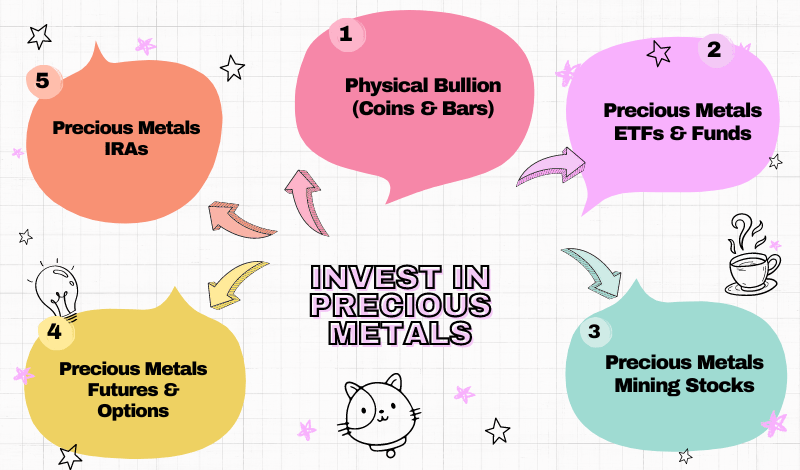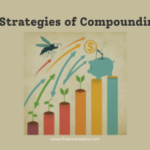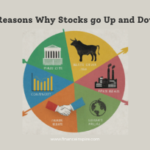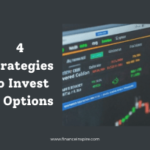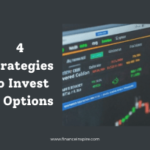Your Golden Ticket: Unlocking 5 Paths to Precious Metals Investing
Precious metals like gold, silver, platinum and palladium have been valued by civilizations across the globe for thousands of years. Beyond their use in jewelry and decorative items, these metals have many industrial applications in fields like technology, aerospace, automotive, and more. Investing in precious metals can provide a hedge against inflation and economic uncertainty. During times of market volatility or currency devaluation, precious metals tend to retain or even increase their value, making them an attractive portfolio diversifier.
Investing in precious metals can provide a hedge against inflation and economic uncertainty. During times of market volatility or currency devaluation, precious metals tend to retain or even increase their value, making them an attractive portfolio diversifier to invest in precious metals.
If you’re looking to add precious metals to your investment portfolio, there are several ways to gain exposure. Here are five popular methods to invest in precious metals:
1. Physical Bullion (Coins & Bars):
One of the most direct ways to invest in precious metals is by purchasing physical bullion in the form of coins or bars. Bullion refers to precious metals that have been melted down, refined, and cast into bars or struck into coins of specific weights and purities when you invest in precious metals.
Gold, silver, platinum and palladium bullion coins and bars are produced by government mints as well as private refineries and mints around the world when you invest in precious metals. Some of the most popular gold bullion coins include the American Gold Eagle, Canadian Gold Maple Leaf, South African Krugerrand, and Austrian Philharmonic. For silver, sought-after coins are the American Silver Eagle, Canadian Silver Maple Leaf, and Australian Silver Kookaburra.
Advantages of Physical Bullion:
– Direct ownership of the precious metal
– Potential for capital appreciation as metal prices rise
– A tangible asset you can hold and store yourself
– High liquidity as bullion coins and bars are globally recognized
Drawbacks of Physical Bullion:
– Storage and insurance costs if not kept at home
– Dealer premiums over spot price when buying
– Potential for forgeries requires caution when buying
– Selling incurs dealer buyback costs and spreads
When purchasing physical bullion to invest in precious metals, be sure to only buy from reputable dealers and have the metals authenticated and certified for purity and weight. Popular online dealers include APMEX, JM Bullion, SD Bullion, and Money Metals Exchange.
2. Precious Metals ETFs & Funds:
For those who want exposure to precious metals without the hassle of storing physical bullion when they invest in precious metals, exchange-traded funds (ETFs) and mutual funds that track the price of gold, silver and other precious metals offer an easy solution.
Some of the largest and most liquid precious metals ETFs include:
– SPDR Gold Trust (GLD)
– iShares Gold Trust (IAU)
– Aberdeen Standard Physical Platinum Shares (PPLT)
– Aberdeen Standard Physical Palladium Shares (PALL)
When you invest in precious metals through ETFs, these ETFs own physical bullion that is stored in vaults on behalf of investors. Each share represents a specific amount of the underlying precious metal.
Advantages of Precious Metals ETFs:
– Easier than buying physical bullion
– Highly liquid way to trade precious metals
– No storage or insurance costs
Drawbacks of Precious Metals ETFs:
– Annual fees charged by fund sponsors
– No ownership of the actual physical metal
– Potential for tracking errors versus spot prices
In addition to ETFs, there are also closed-end funds and mutual funds that invest in precious metals mining stocks and bullion when you invest in precious metals. Examples include Sprott Physical Gold & Silver Trust and Vanguard Precious Metals and Mining Fund.
3. Precious Metals Mining Stocks:
Rather than investing directly in the precious metals themselves, you can also gain exposure by investing in the companies involved in mining and producing them when you invest in precious metals.
When you invest in precious metals through mining stocks, precious metals mining stocks comprise companies engaged in the exploration, extraction, development and production of gold, silver, platinum and palladium from mines around the world.
Some of the largest precious metals mining companies include:
– Newmont Corporation (NEM)
– Barrick Gold Corporation (GOLD)
– Wheaton Precious Metals (WPM)
– Agnico Eagle Mines (AEM)
– Sibanye-Stillwater (SBSW)
These stocks tend to be more volatile than investing in physical bullion when you invest in precious metals, as their profitability depends on the costs of mining operations. However, they can provide leveraged upside when precious metals prices are rising.
Advantages of Mining Stocks:
– Upside leverage to rising precious metals prices
– Exposure to growth of mining operations
– Some pay dividends
Drawbacks of Mining Stocks:
– More volatile than physical bullion
– Impacted by operating costs and other business factors
– Less direct play on precious metals prices
You can invest in individual precious metals mining stocks, a mining stock ETF like the VanEck Vectors Gold Miners ETF (GDX), or a mutual fund focused on the precious metals mining sector when you invest in precious metals.
4. Precious Metals Futures & Options:
The futures and options markets provide another avenue for investing and speculating on the future price movements of precious metals. These derivative contracts are traded on exchanges like the COMEX (managed by CME Group) and give traders exposure to precious metals without taking physical delivery.
A futures contract is an agreement to buy or sell a specific quantity of a commodity at a predetermined price and date in the future. Options give the holder the right, but not obligation, to buy (call option) or sell (put option) the underlying futures contract.
Popular precious metals futures contracts include:
– COMEX Gold Futures (GC)
– COMEX Silver Futures (SI)
– NYMEX Platinum Futures (PL)
– NYMEX Palladium Futures (PA)
Advantages of Futures/Options:
– Leverage for speculation on price movements
– Can go long or short precious metals prices
– Avoid taking physical delivery of metals
Drawbacks of Futures/Options:
– Significant risk due to leverage involved
– Potential for unlimited losses
– Expiration dates on contracts
Trading precious metals futures and options requires extensive knowledge of futures markets, leverage, margin requirements, and risk management. It’s generally recommended only for experienced traders and active investors.
5. Precious Metals IRAs:
For those looking to include precious metals as part of their retirement portfolio, precious metals IRAs allow you to invest in approved coins and bullion through a self-directed individual retirement account.
Eligible precious metals products that can be held in these specialized IRAs include:
– American Gold Eagle bullion coins
– American Silver Eagle bullion coins
– Certain gold, silver, platinum and palladium bars
The precious metals must meet minimum fineness requirements and be held by an approved custodian or depository. You cannot store the physical metals yourself with a precious metals IRA.
Advantages of Precious Metals IRAs:
– Tax-advantaged way to invest in bullion
– Portfolio diversification in retirement accounts
– Potential hedge against inflation for retirement
Drawbacks of Precious Metals IRAs:
– Limited selection of approved coins/bars
– Higher fees than regular IRAs
– Cannot take physical possession until distribution
Setting up a precious metals IRA generally requires opening a self-directed IRA through a specialized custodian or trustee that allows you to invest in approved precious metals products.
Which Way to Invest is Right for You?
The right way to invest in precious metals depends on your investment objectives, risk tolerance, and personal preferences. Here’s a quick summary of the pros and cons of each approach:
Physical Bullion:
+ Direct ownership
+ Potential appreciation
– Storage/insurance costs
– Dealer premiums
Precious Metals ETFs/Funds:
+ Easy trading accessibility
+ No storage costs
– Annual fees
– No physical ownership
Mining Stocks:
+ Leverage to rising metals prices
+ Some pay dividends
– More volatility
– Operating risk
Futures/Options:
+ Leverage for speculation
+ Go long or short
– Significant risk
– Expiration dates
Precious Metals IRAs:
+ Tax-advantaged
+ Retirement diversification
– Limited selection
– Higher fees
No matter which avenue you choose, always do your due diligence, understand the risks involved, and invest within the context of your overall portfolio strategy and asset allocation plan. Precious metals can serve as an important diversifier, but should be just one component of a well-rounded investment portfolio.
Conclusion: Invest in Precious Metals
Investing in precious metals can be an effective way to diversify your portfolio, hedge against inflation, and protect your wealth during times of economic uncertainty. Whether you choose to invest in physical bullion, precious metals ETFs/funds, mining stocks, futures/options, or a precious metals IRA, it’s important to understand the unique risks and considerations associated with each approach.
For those seeking direct ownership and the potential for capital appreciation, physical bullion in the form of coins or bars offers a tangible way to invest in precious metals. However, it’s important to factor in storage and insurance costs, as well as dealer premiums when buying and selling.
Precious metals ETFs and funds provide an easy and liquid way to gain exposure to precious metals without the hassle of storing physical bullion. While these investment vehicles eliminate storage costs, they do come with annual fees and lack the direct ownership of the underlying metal.
Mining stocks offer leverage to rising precious metals prices but also come with additional volatility and operational risks associated with mining companies. However, for those willing to accept the higher risk, mining stocks can provide attractive returns during bull markets for precious metals.
Futures and options contracts provide a speculative way to trade precious metals prices with leverage, but also carry significant risks due to the potential for unlimited losses and the need to manage expiration dates.
Finally, precious metals IRAs allow investors to include approved coins and bullion within their tax-advantaged retirement accounts, providing a potential hedge against inflation and a way to diversify retirement portfolios.
Ultimately, there is no one-size-fits-all approach to investing in precious metals. The right method will depend on your investment goals, risk tolerance, and personal preferences. It’s important to conduct thorough research, understand the risks involved, and invest within the context of a well-diversified portfolio strategy.
Precious metals can serve as a valuable portfolio diversifier and store of value, but should not be viewed as a get-rich-quick scheme. By carefully evaluating the various investment options and aligning them with your overall financial plan, you can potentially benefit from including precious metals as part of a balanced investment approach.

